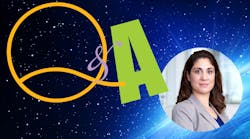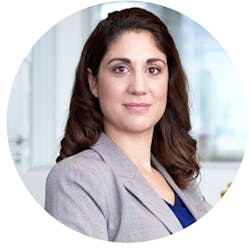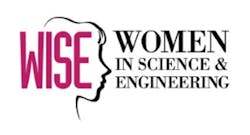Q&A: How Florbela Costa Helps Drive Unmanned Space Flight
WATCH: Engineers Modify Six Brushed DC Motors for a Mission to Mars
Last year, NASA’s Ingenuity Mars Helicopter nailed its first takeoff when it climbed to 10 ft above ground before landing successfully. This year, with 29 flights under the belt, the helicopter is well into its operating phase, fulfilling a mission to explore how aerial scouting can facilitate future missions on the Red Planet.
The mission’s resounding success is also a pat on the back for drive specialist maxon. The Ingenuity helicopter is equipped with six maxon motors, and each motor is 10 mm in diameter, around 20 mm in length and weighs just under 4 lb.
These drives control the pitch of the rotor blades and the direction of flight for the helicopter, said Florbela Costa, a project manager within maxon’s SpaceLab, the division that specializes in developing higher risk, new technologies for space missions.
She explained that multiple adaptations were needed to make the DCX micromotor space-worthy. Fortunately, her team could turn to maxon’s catalogued product as the baseline for the design of the customized motor. “We use the same diameter, the same magnets, the same operation principle, and then we reinforce the motor to be able to survive the extreme temperatures and vibration and shocks that they will see on Mars during the mission and during the shipment,” said Costa.
To withstand extreme conditions, the design team switched out the lubricant to make it vacuum compatible. The engineers changed the cables to space-rated cables, as well as replaced plastic components with metal parts before welding them to avoid any displacement during high vibration and shock.
“Luckily, we don’t have to start from scratch every time we develop such projects or products,” said Costa. “Maxon has such big expertise in space and has many applications in Mars on other space applications. We have a lot of knowledge. We use that baseline every time we have new projects, so we have more reliability on every new development.”
Following up on the news that the helicopter was awarded the 2021 Robert J Collier Trophy, Machine Design invited Costa to share snippets from her day-to-day experience working on the project. (The Q&A has been edited for length and clarity.)
Machine Design: These motors are much tinier than the typical brushed DC motors. You needed six of these motors for the Ingenuity helicopter. Lightweighting is an issue when one develops products for spaceflight. How does it factor into the motor’s design?
Florbela Costa: Yes, you’re right that the weight was the main challenge for this project. In previous projects, we also had the weight requirements. Sometimes they are hard to achieve, but here, I think, it was really the main point of the project, because we need to consider that for a helicopter to fly on Mars, it will have to fly in the atmospheric pressure that is around 1% of the Earth. So, the whole device needs to be very light in order to be able to fly there.
This is where the requirement for very low weight is so crucial. For this specific motor, we have around seven grams per motor, which is extremely low. The catalog one has a few more grams, and we had to really try to remove every gram that we could. We mainly did that on the metallic parts. But still, we had to make sure that we did not compromise the integrity of the motor in terms of mechanical resistance, so that you will still be able to withstand the shock and the vibration. Testing here is really crucial to make sure that we can do both.
MD: We’ve talked about lightweighting and about materials selection. These are very interesting challenges and problems to solve. Were there any other challenges in developing the motor and how did you work through it?
FC: All of the other motors that maxon has on Mars are protected because they are inside the Rover. In this case, it’s really great because for the first time we can directly see our motors on NASA’s pictures. That is really cool. But that brings other challenges; for example, the extreme temperatures during the night and the Martian dust that we need to deal with. In this case, we changed the pinion side, so that we have the output shaft going on the same side as the cables.
This is because our customer (NASA) will protect this part; the part will be inside their systems and we will be protected from dust. On the other (exposed) side of the model, we have created a dust cape, which will protect the motor from any contamination going into the motor. This is an example that is very specific to Ingenuity’s motors.
MD: I can see how it impacts both technical and quality requirements. Talk a little bit about the quality requirements and how the rigor of a space project differs from other applications.
FC: For space applications, we need to ensure that nothing fails. We will not have any maintenance or substitutions of components in space—at least not for now. We really need to make sure they will not fail, and this is why we spend a lot of energy testing. We need to make sure that it will last and that it will be able to activate the way it was supposed to.
In the case of Ingenuity, we are so happy that it went way beyond the requirements. The requirement was only five flights, and now Ingenuity has flown 29 times. It’s really great that it can endure so much more than the preliminary requirements, and this is all thanks to testing. We really went into shock vibration testing for low temperature—we did a lot of cycling.
On the quality side, during production we checked each production step to make sure that components perform correctly and with high quality. For example, we do 100% photographs on some critical processes, such as soldering and coating, so that we can check at any time how the soldering or coating was done—even after the motor is assembled.
Another example of a special process is for welding. This project does not qualify for our production line because it’s not a series production; it’s something we are only going to build once, so standard production doesn’t make sense. We make a few extra parts and we have a first part test weld. And then we weld all the parts. The first and last parts on the weld will be destroyed so we can check that the weld was performed correctly. This weld process allows us to have a guarantee that the whole lot has a good weld. This is an example of how we control the quality of the motors.
MD: What special skills do project managers like yourself bring to these types of projects?
FC: I think that project managers for space projects, specifically, need to be very flexible. I have a space project where the requirements are changing at the same time as we are developing the product, or at the same time as we are manufacturing it. Being able to have a close relationship with the customer and to anticipate their needs is really important.
One thing that we need to be careful about in space projects is that we need to have everything really well documented, really well justified and traceable. This is so we are able to check in some years, if needed, what exactly was done on that project, what the changes were and so on. The documentation process is a big part of it. It is very important.
MD: Tell us me about yourself. What prepared you for this role? Tell us about your education and your career progression that brought you to this team.
FC: I studied a master of aeronautical engineering in Portugal, and then I worked for a Portuguese company called CEiiA for over five years. The project was the Embraer KC390, and I worked on the elevator and sponson, which are two main structural components of that cargo military aircraft.
I had the opportunity to go to the customer facilities in Brazil for one year. There I worked closely with them and learned all about the processes and the requirements for the project. And then I came back to Portugal, and I was sharing this with the team, and I was implementing new processes so that we work according to what the customer was expecting from us. So, I learned a lot about processes and about the relationship with the customer and how to deal with big teams. At some point on this project, we were more than 100 people; this was during the design-release phase.
I had different positions during those five years. I started as a design engineer and then had different positions. At the end, I was the product manager and I was the project manager. During that time, we had a smaller team. During the certification of the airplane we were around 20 people. So, really being able to see all the phases of the project, from the first concept, design, until certification. Working with multicultural teams on such a big project really helped me to build the knowledge that is now useful for maxon. I have been in maxon for five years.
MD: What are your personal strengths on your team?
FC: One thing that they have told me several times is that I’m the calm person on the team. I am very calm, and I think that can be very crucial in our environment, because we have such a stressful job. We have a high level of responsibility, we have heavy workloads, we work with different people, in different areas, different backgrounds, different nationalities and culture. Sometimes it can get really stressful and I think being able to maintain calm helps to move the project forward.
Another important skill that I think I have and all my teammates have, is being proactive. I think it’s really important to not wait for the problems to arise, and to try to understand what can happen and try to fix them before they happen. And then, of course, when they happen, because something will always happen.
Being able to think outside the box and trying to solve those problems [is important]. We all think differently on our team, yet we are alike in that we are all very proactive.
MD: What’s next for your project? And where do you go from here?
FC: I’m working on several projects and I’m not able to discuss all of them, but some projects are for Mars, some are for satellite deployments or servicing. One specific project that I can disclose, and I have been working on for a few years now, is the design of a new docking system called IBDM (International Berthing and Docking Mechanism). This is an ESA (European Space Agency) project. For this project we have two different types of actuators. They are used in two different places of this IBDM system; on the hard and the soft capture systems.
One particularity of this project is that we were required redundancy, meaning that for each of the actuators we have two motors. It’s a manned flight application, so the safety requirements are very high, to make sure that nothing will fail. This was very challenging but also very technically challenging to do. It’s [fun] to see that since I’ve done this project, we have received so many inquiries from customers to do this type of application. They are really looking for the redundancy on our actuators, so it’s great to be able to develop this new product because it can be reused for other applications. This is really great.
Editor’s Note: Machine Design's Women in Science and Engineering (WISE) hub compiles our coverage of gender representation issues affecting the engineering field, in addition to contributions from equity seeking groups and subject matter experts within various subdisciplines.




